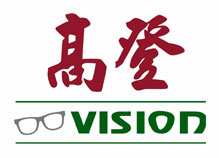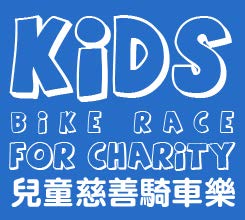
Eye to Eye with Dr. Dennis Leung ~ Full Interview
Part 1: Crossed Eyes
Part 2: Children Eye Exam
Part 3: Controlling Near-sightedness or “Myopia”
Part 1: Crossed Eyes
Q: What are Crossed-Eyes?
Crossed-eyes is called “esotropia;” it means that each eye is looking in a different direction, causing two sets of information being sent to the brain, forcing it to shut off one set of information from one eye. If not treated properly, this could lead to Lazy-eye or “Amblyopia.”
Q: What is the reason for causing Crossed-Eyes?
Far-sightedness or “hyperopia” is common among infants and toddlers because their eyeballs are relatively small and not yet fully developed. The eyeballs will lengthen with age and the amount of far-sightedness will decrease. However, severely far-sighted children have to exert more forces to focus, and this may trigger an inward movement of the eyes, and crossed eyes start to form.
Q: What are the problems of crossed-eyes on children?
Children with crossed eyes may avoid maintaining focus at near, such as reading, as they find it too tiring. They are also more prone to have accidents and falls due to their poor depth perception. If left uncorrected, this may give rise to a more severe problem called Lazy-Eye or “amblyopia” which means one eye is more suppressed. By age 8 or 9, an untreated lazy eye will lose complete function!
Q: How do I know if my baby/child has this?
Fortunately, crossed eyes do not occur that often, sometimes it is only an illusion of crossed eyes. Research shows that Asian babies tend to have a higher percentage of having the illusion of a cross eyed because of the arrangement of the lid area and the shape of the eye. It’s easy to detect by a doctor and to correct. The first thing to do is bring attention to your pediatrician. In some cases pediatricians cannot tell easily, so make sure you consult an eye doctor.
Q: What can be done to correct this?
If the symptom is caused by the weakness of eye muscles, prescription eyewear will be used to straighten out the eye. Some may need surgery to address more severe muscle weakness, and in some cases both are needed. For some other patients who have occasional symptoms, vision training will help in the straightening of the eye muscles.
Part 2: Children Eye Exam
Q: When do young children need their first eye exams?
Beginning at age 2 to 3, children should have yearly eye exams. Eye doctors usually have equipment for prescriptions to be evaluated without requiring the young patient to respond.
Q: What are the general procedures in a children eye exam? And how long does it take?
Eye exam for children takes about 45 minutes, it generally cover:
– Case history
– Vision Assessment (e.g. crossed eyes or lazy eye)
– Refractive Status (e.g. near- or far-sightedness)
– Binocular Vision (e.g. strabismus,)
– Color Vision (e.g. color defect)
– Intra-ocular Pressure (glaucoma pre-test)
– Ocular Health (dilation of the eye is optional)
– Diagnosis and Treatment
Part 3: Near-sightedness or “Myopia”
Q: What is near-sightedness?
Near-sightedness or “myopia” is defined by eyes focusing incorrectly, making distant objects appear blurred. The longer the eye, the more nearsighted a person is; the shorter the eye, the more farsighted a person is. Perfect vision involves neither too long or short of an eye.
Q: When do symptoms appear in children?
Most newborn babies have relatively shorter eyes, making them a little far-sighted at birth. As the child grows, the eye lengthens with age, and sometimes near-sightedness develops. Prescription usually grows with age until it finally slows down in the later teenage years.
Q: How can we control or slow down this process?
A medication called “Atropine” can slow down the lengthening of the eyeball very effectively, so it is very popular overseas. However, it does have moderate side-effects such as headache or difficulty focusing close-up, so it is rarely used in the United States.
Orthokeratology (Ortho-K) is a popular solution. A child can wear a pair of hard contact lenses measured precisely with the shape of the cornea to slow down lengthening progression by half. For example, prescription increase of +1 (100) will be reduced to +0.5 (50) through this program. Children usually start at age 6 to 7; kids younger than 6 are not recommended.
Q: What is the benefit of Ortho-K?
The key benefit of Ortho-K is that the lens allows oxygen permeability and can be worn overnight. The child enjoys improved vision throughout the day, and builds his/her confidence and flexibility to do all kinds of athletic or outdoor activities, without the inconvenience of glasses.
Q: Why is it so important to control this?
For near-sighted kids, the retina and the eyeball will be artificially stretched overtime. With a higher prescription, a patient is more prone to retinal detachment, glaucoma, and other diseases later in life. Unfortunately, this risk cannot be diminished even when the patient undergoes Lasik procedure to correct the near-sightedness in the future.
Additional readings & links:
Golden Vision website patient education page:
http://www.goldenvision2020.com/patienteducation.asp
NPR News: Atropine Eye Drops May Treat Myopia in Children
http://www.npr.org/templates/story/story.php?storyId=7773204
Disclaimer: La JaJa Kids forms an advisory board that consists of physicians, medical specialists, academics and teachers, to share professional advice on voluntary basis. Information provided above is for reference only, our publication and member of the advisory board will not be liable for the content in any legal manners.

Dr. Leung is the father of a lovelye 6-year old girl. |
Dr. Leung’s Profile ~ Dr. Dennis Leung has over 25 years of experience in the Optometry field. He has been serving the San Gabriel valley community for over 20 years and is currently one of the leading optometrists in the community.
Dr. Leung graduated in 1984 from New England College of Optometry, Boston, Massachusetts. He was a member of the Beta Sigma Kappa Optometric Honor Society and is currently a board member of the Orthokeratology Academy of America. Dr. Leung is also affiliated with the California Optometric Association and American Optometric Association. Dr. Leung is fluent in Spanish, Mandarin, Cantonese, and English.
|
Coming Soon







